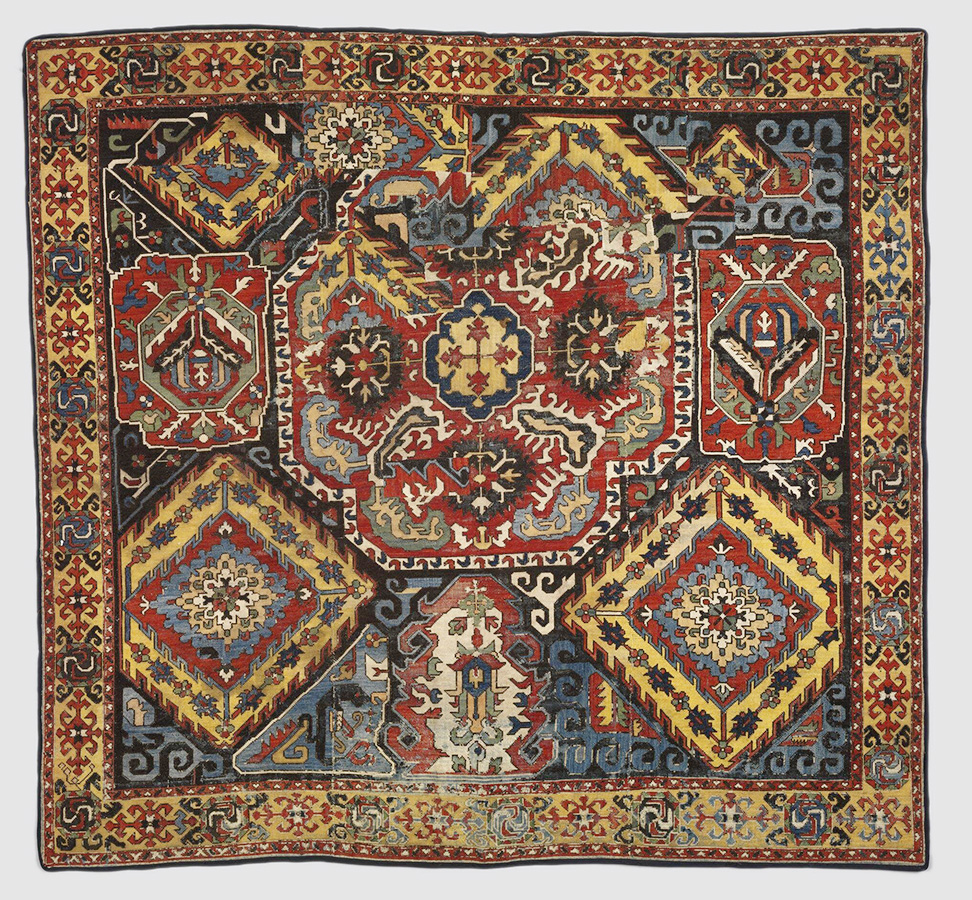|
This textile is made from
plain weave cotton,
decorated with silk embroidery
in cross-stitch. The silk
embroidery threads come in black, white, yellow (some faded to beige),
green, red, and shades of blue ranging from mid to light.
The main design was created by dyeing
the ground fabric with
indigo using a
resist-dyeing technique,
which blocks certain areas from absorbing dye. The ground fabric is
black and has been
pieced, cut, and rejoined,
which has disrupted the original design.
The textile includes several layers: a
facing of bias-cut plain weave
silk in dark blue,
a backing of plain weave glazed
cotton in green,
and traces of bronze-coloured felt.
This felt may be the remains of an original
woollen backing or a
felted interlining. So,
the ground (background)
is black cotton. The dark blue silk is an additional facing layer over the
ground fabric.
The original design featured a
central red quatrefoil
(four-petaled shape), outlined in white, with red and blue details.
Surrounding this center are red
rectangular blocks and large
yellow and red lozenges,
arranged symmetrically. These shapes are filled with
stylized floral and geometric
motifs. At each end, there is a
red palmette (palm-like
form). The border pattern
consists of alternating
swastikas within octagons and
pointed hooked
"garmagly" motifs.
It belongs to
Group 1, sub-group 2 as
defined by Jennifer Wearden in her article
“Azerbaijanian Embroideries: A
Synthesis of Contrasts” (Hali 59, October 1991, pp. 102-111).
Textiles in this category are characterized by
cross stitch embroidery
using a dark, strong color palette
and feature cartouche-like
compartments surrounding a central medallion—features clearly
visible in this piece.
The museum estimates the textile’s age
to be between 1670 and 1700.
Height: 1265 mm
Width: 1355 mm (complete)
Based on the design, the original
height was likely at least 1050 mm (105 cm).
|

